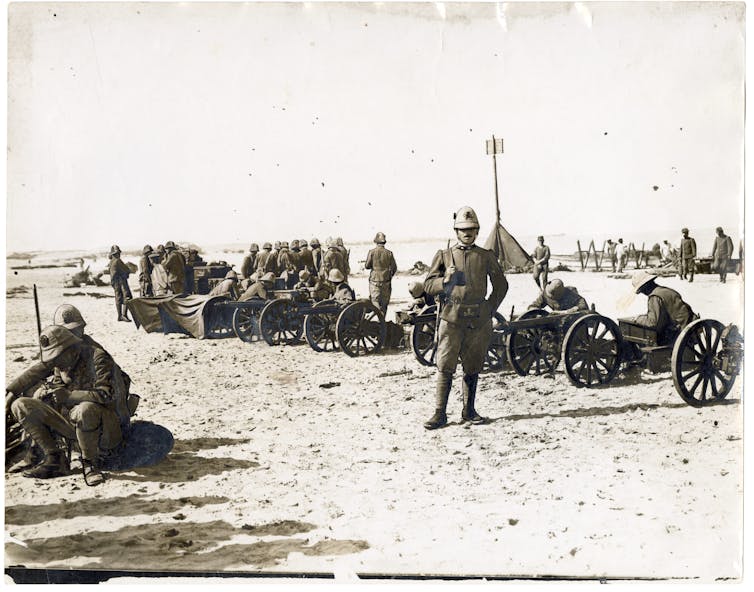Our automatic response to images of conflict is often biased. We search for familiarity, for ways to process the horrors that are happening in front of our eyes, to answer our knee-jerk question: does it affect us?
Invoking images of the world wars arguably heightens our response because national ideas about the world wars are so deeply rooted in our historical knowledge. Yet wars in Syria and elsewhere are more easily seen by most Europeans as distant or foreign.
However, many of the world war battles involving European powers were fought outside of Europe, in places like east Africa and the Middle East. And of course other wars before these were fought all over the world. This made us wonder: is the war in Ukraine different because it is in eastern Europe and undoubtedly invokes our knowledge and recognisable images of the world wars?
These questions are the focus of our new project, Early Conflict Photography (1890-1918) and Visual Artificial Intelligence (EyCon). In this project, we are exploring our westernised view of the world wars and how that is directly tied to the current inaccessibility of historical photographs and their contexts. To understand and correct this imbalance, EyCon is using artificial intelligence (AI) to improve our knowledge of often-overlooked war images from the early conflict era, from 1890 to 1918.
By capturing these graphic images and making them a part of our accessible history, we can start to recover overshadowed but globally shared experiences of war. But we can also question what effect our limited and Eurocentric knowledge of global history has on our response to images of modern conflicts.
As part of Eycon, thousands of photographs from colonial warfare and pre-1914 conflicts, such as the Russo-Japanese war and the Balkans war, as well as first world war African and Asian battlefields, will be featured in the project’s database. However, it’s not as simple as uploading them.
Recording history
While a photograph might say a thousand words, those words are not necessarily the right ones. Conflict and war zone images create further issues for preservation and digitisation, as they may depict sensitive material and there are often more than two sides to the story.

Photograph of Italian troops in Libya in October 1911. Service Historique de la Défense, author provided (no reuse).
This means the interpretation of an image can become a matter of perspective. Without accurate information about the photos such as when and where they were taken (known as metadata) or the means to search images across archives, the full records of even our recent global conflicts could be lost.
The accuracy of metadata is one of the biggest problems with image preservation. While this data allows images to be discovered with keywords, the information that accompanies an image record can become problematic if the description and information are limited, outdated, biased, or simply wrong.
When historical images are digitised, much of the metadata is simply copied from notes on the original source held at the archive from which they come, if there are any notes at all. Another archive with a copy of the same image might have different notes, so the metadata attached to the digital record does not always match.
This is a major issue for archivists, researchers and public users alike, as the accuracy of the record is integral to the way the photograph is used, catalogued and interpreted. So when differences occur, how can we know which notes, if any, are correct?
This issue is the focus of the EyCon project...
Dr Katherine Aske and Dr Lise Jaillant's article on why photos of wartime Europe shape views of conflict and how project EyCon looks to 'right the record', continues on The Conversation website.
